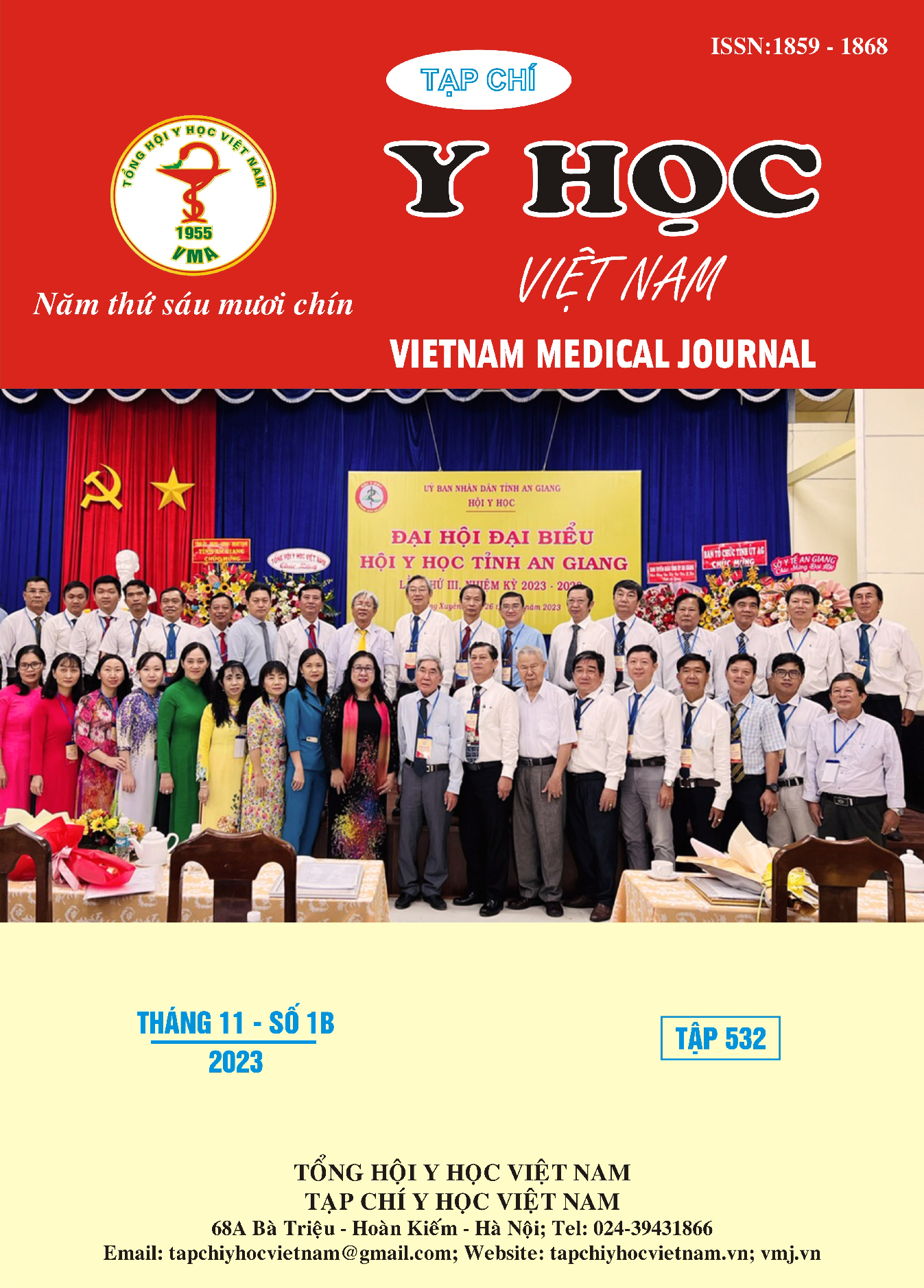CURRENT STATUS OF HEAVY METAL POLLUTION IN DAIRY FOODS FOR CHILDREN IN HANOI
Main Article Content
Abstract
Objective: Describe the current situation of heavy metal contamination in dairy foods for children in Hanoi area. Subjects and methods: Cross-sectional descriptive study with analysis of over 420 milk samples for children in Hanoi, including powdered milk products, liquid milk, cheese products, fat products from milk, and fermented milk. Test to determine heavy metal content Cd, Pb, Hg, As using AAS ZA-3000 machine. Assessed according to the maximum limit of chemical pollution according to QCVN 05-1/2/3/4/5:2010/BYT. Results: Concentration of Cadmium, lead exceed the permissible limits the highest in fermented milk samples (all at 3.3%). Level of Mercury exceeds the permissible limit the most in cheese samples (3.3%). Arsenic concentration exceeds the permissible limit the most in liquid milk samples (4.2%). Conclusion: Heavy metals were detected in milk products for children in Hanoi, but the levels exceeding the allowable limit were low.
Article Details
Keywords
heavy metals, milk foods for children, Hanoi
References
2. Amir Ismail, Muhammad Riaz, Saeed Akhtar, et al. (2019). Heavy metals in milk: global prevalence and health risk assessment. Toxin Reviews, 38(1): 1-12.
3. Mohamadreza Arianejad, Mohammad Alizadeh, Arash Bahrami, et al. (2015). Levels of some heavy metals in raw cow's milk from selected milk production sites in Iran: is there any health concern? Health promotion perspectives, 5(3): 176-81.
4. Nina Bilandžić, Maja Đokić, Marija Sedak, et al. (2011). Trace element levels in raw milk from northern and southern regions of Croatia. Food chemistry, 127(1): 63-66.
5. Rey-Crespo F, Miranda M, López-Alonso M (2013). Essential trace and toxic element concentrations in organic and conventional milk in NW Spain. Food Chemical Toxicology, 55: 513-518.
6. Castro-Bedrinana J, Chirinos-Peinado D, Ríos-Ríos E, et al. (2021). Dietary risk of milk contaminated with lead and cadmium in areas near mining-metallurgical industries in the Central Andes of Peru. Ecotoxicology Environmental Safety, 220: 112382.
7. Annalisa Bargellini, Francesco Venturelli, Elisabetta Casali, et al. (2018). Trace elements in starter infant formula: dietary intake and safety assessment. Environmental Science Pollution Research, 25(3): 2035-2044.
8. Mostafa Delavar, Mehdi Abdollahi, Atefeh Navabi, et al. (2012). Evaluation and determination of toxic metals, lead and cadmium, in incoming raw milk from traditional and industrial farms to milk production factories in Arak, Iran. Iranian Journal of Toxicology, 6(17): 630-634.
9. A Asadi Dizaji, Ali Eshaghi, A AghajanzadehGolshani, et al. (2012). Evaluation and determination of toxic metals (Lead and Cadmium) in cow milk collected from East Azerbaijan, Iran. Eur J Exp Biol, 2(1): 261-265.


